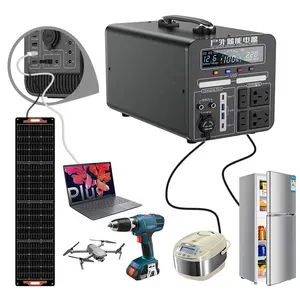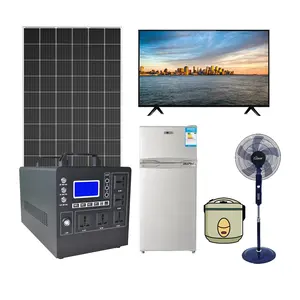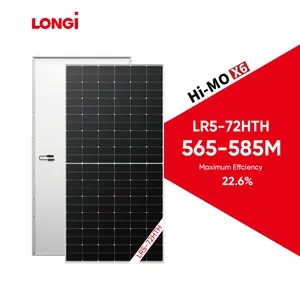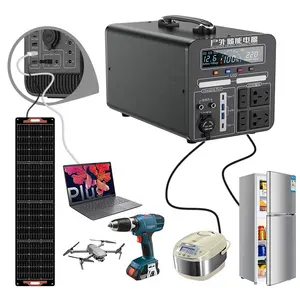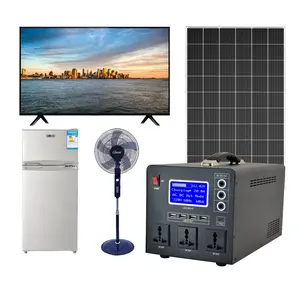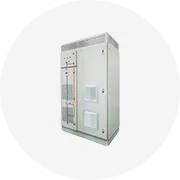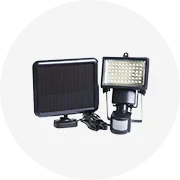ได้รับความนิยมในอุตสาหกรรมของคุณ






12V 24V 100Ah 200Ah แบตเตอรี่ลิเธียมไอออน LiFePO4 EV RV แบตเตอรี่ Li Ion แบตเตอรี่พลังงานแสงอาทิตย์สําหรับคาราวานเรือเรือยอชท์กลางแจ้ง UPS Power
฿702.89 - ฿1,072.83
การสั่งซื้อขั้นต่ำ: 2 ชิ้น







CoPoW 12v แบตเตอรี่ลิเธียม 24V 36V 80Ah 100Ah 120Ah 240Ah 320Ah 12v lifepo4 แบตเตอรี่ 48v RV Marine 12v lifepo4 แบตเตอรี่ลิเธียม
฿425.44 - ฿28,270.91
การสั่งซื้อขั้นต่ำ: 2 ชิ้น






แบตเตอรี่ลิเธียมไอออน Lifepo4แบตเตอรี่เก็บพลังงานแสงอาทิตย์สำหรับ100AH RV Marine 12V
฿3,662.42 - ฿4,402.31
การสั่งซื้อขั้นต่ำ: 100 ชิ้น







100Ah 200Ah 50Ah Lifepo4 30kWh แบตเตอรี่ EV RV 12V 24V 36V 48V 72V แพ็คแบตเตอรี่ลิเธียมไอออนสำหรับคาราวานเรือเรือเดินทะเล yach
฿702.89 - ฿1,442.78
การสั่งซื้อขั้นต่ำ: 2 ชิ้น







สมาร์ทพลังงานแสงอาทิตย์แบตเตอรี่ 12V 12.8V 24V 100ah 150Ah 200ah 250ah 300Ah 400Ah บ้านเก็บพลังงาน lifepo4 แบตเตอรี่ลิเธียม li-ion แบตเตอรี่ Pack
฿708.44 - ฿21,037.08
การสั่งซื้อขั้นต่ำ: 5 ชิ้น







Ritar แบตเตอรี่ตะกั่วกรดแบบปิดผนึก,แบตเตอรี่เจลจัดเก็บพลังงานแสงอาทิตย์ขนาด12V 100Ah 120Ah 150Ah 200Ah 250Ah รอบลึก AGM
฿2,552.60 - ฿3,329.48
การสั่งซื้อขั้นต่ำ: 10 ชิ้น



6500รอบ16วินาที100A เครื่องแปลงกระแสไฟฟ้าพลังงานแสงอาทิตย์51.2โวลต์6Kwh 120Ah แบตเตอรี่ลิเธียมไอออนเก็บพลังงานแบตเตอรี่ LiFePO4 48โวลต์
฿11,098.24 - ฿19,236.95
การสั่งซื้อขั้นต่ำ: 1 ชิ้น






เหมาะสำหรับใหม่พลังงาน 12 โวลต์ 100ah 120ah 150ah 200ah 250ah agm gel แบตเตอรี่พลังงานแสงอาทิตย์
฿2,922.54 - ฿3,403.46
การสั่งซื้อขั้นต่ำ: 10 หน่วย






แบตเตอรี่พลังงานแสงอาทิตย์12โวลต์เจล60AH 100AH 120AH 150AH 200AH 250AH ที่มีคุณภาพสูงเจลแบตเตอรี่ตะกั่วกรดแบตเตอรี่
฿6,843.92
การสั่งซื้อขั้นต่ำ: 2 ชิ้น






Deye EU คลังสินค้า Deye ess batterie deye แบตเตอรี่ลิเธียมไอออน RW-M6.1 51.2v 120ah พลังงานแสงอาทิตย์เก็บแบตเตอรี่
฿32,924.77 - ฿46,242.65
การสั่งซื้อขั้นต่ำ: 2 ชุด






การบำรุงรักษาฟรีเจลบริสุทธิ์แบตเตอรี่120ah 12โวลต์แบตเตอรี่แบบชาร์จไฟสำหรับปิดตารางระบบแผงเซลล์แสงอาทิตย์
฿4,032.36 - ฿5,142.19
การสั่งซื้อขั้นต่ำ: 2 ชิ้น






EITAI Lifepo4 48V 51.2V 120ah 200ah 280ah การจัดเก็บพลังงานแสงอาทิตย์แบตเตอรี่ลิเธียมสำหรับระบบจัดเก็บข้อมูลภายในบ้าน
฿20,346.77 - ฿31,445.01
การสั่งซื้อขั้นต่ำ: 1 ชุด
หมวดหมู่ยอดนิยม
เกี่ยวกับ 120ah แบตเตอรี่พลังงานแสงอาทิตย์
เทคโนโลยีกำลังเปลี่ยนแปลงวิถีชีวิตประจำวันของผู้คน ดังนั้นเชื่อถือได้ 120ah แบตเตอรี่พลังงานแสงอาทิตย์ ใน Alibaba.com ช่วยเพิ่มความทนทานให้กับอุปกรณ์ที่ต้องการกำลังขับที่ดีกว่า รุ่นต่างๆมีข้อกำหนดที่แตกต่างกันเพื่อให้ตรงกับคำแนะนำของซัพพลายเออร์ ทนทาน 120ah แบตเตอรี่พลังงานแสงอาทิตย์ ควรค้นหาได้อย่างรวดเร็วและเปลี่ยนได้ง่าย ด้วยวัสดุการผลิตที่หลากหลายจึงมีตัวเลือกที่ดีกว่าเมื่อซื้อมาใช้งาน
เนื่องจากความก้าวหน้าทางเทคโนโลยีทำให้เครื่องใช้ไฟฟ้าจำนวนมากจำเป็นต้องมีแหล่งจ่ายไฟที่สม่ำเสมอ เชื่อถือได้. 120ah แบตเตอรี่พลังงานแสงอาทิตย์ ควรอยู่ได้นานกว่าเครื่องใช้โฮสต์เพื่อการบริการที่ดีขึ้น ผลิตภัณฑ์ช่วยเหลือเหล่านี้เข้ากันได้กับส่วนประกอบลิเธียมและกรดตะกั่ว ดังนั้นความเข้ากันได้ระหว่างเครื่องใช้ไฟฟ้าและอุปกรณ์ช่วยเหลือจึงมีความเกี่ยวข้องอย่างมาก
ไม่ว่าจะเป็นเครื่องใช้ในบ้านที่อยู่กับที่หรือพาวเวอร์แบงค์พกพาแบบชาร์จไฟได้ ส่วน 120ah แบตเตอรี่พลังงานแสงอาทิตย์ ใน Alibaba.com ช่วยให้แน่ใจว่าพวกเขาให้บริการที่ดีที่สุดแก่ผู้ใช้ ผลิตภัณฑ์เหล่านี้สามารถทนความร้อนสูงและการกัดกร่อนได้ อายุการใช้งานยาวนานให้บริการที่ดีขึ้นก่อนที่จะต้องเปลี่ยน อีกครั้งสถานที่จัดเก็บควรอยู่ในสภาพสมบูรณ์เพื่อลดการกระแทกและความเสียหายอย่างหนัก นอกจากนี้ยังมาพร้อมกับสายเชื่อมต่อเพื่อการบริการที่ดียิ่งขึ้น
สำหรับความต้องการพลังงานขนาดใหญ่เช่นรถสามล้อและเครื่องดนตรีดิจิตอล 120ah แบตเตอรี่พลังงานแสงอาทิตย์ ให้การสนับสนุนทางการเงิน Alibaba.com นำเสนอแพลตฟอร์มสำหรับความน่าเชื่อถือเมื่อทำการซื้อ ผู้ขายทั่วโลกจำนวนมากส่งมอบผลิตภัณฑ์ภายในระยะเวลาที่เหมาะสมเพื่อความสะดวกสบายของลูกค้า เลื่อนดูแคตตาล็อกสำหรับอุปกรณ์ที่เข้ากันได้มากที่สุดและข้อตกลงทางการเงิน
เนื่องจากความก้าวหน้าทางเทคโนโลยีทำให้เครื่องใช้ไฟฟ้าจำนวนมากจำเป็นต้องมีแหล่งจ่ายไฟที่สม่ำเสมอ เชื่อถือได้. 120ah แบตเตอรี่พลังงานแสงอาทิตย์ ควรอยู่ได้นานกว่าเครื่องใช้โฮสต์เพื่อการบริการที่ดีขึ้น ผลิตภัณฑ์ช่วยเหลือเหล่านี้เข้ากันได้กับส่วนประกอบลิเธียมและกรดตะกั่ว ดังนั้นความเข้ากันได้ระหว่างเครื่องใช้ไฟฟ้าและอุปกรณ์ช่วยเหลือจึงมีความเกี่ยวข้องอย่างมาก
ไม่ว่าจะเป็นเครื่องใช้ในบ้านที่อยู่กับที่หรือพาวเวอร์แบงค์พกพาแบบชาร์จไฟได้ ส่วน 120ah แบตเตอรี่พลังงานแสงอาทิตย์ ใน Alibaba.com ช่วยให้แน่ใจว่าพวกเขาให้บริการที่ดีที่สุดแก่ผู้ใช้ ผลิตภัณฑ์เหล่านี้สามารถทนความร้อนสูงและการกัดกร่อนได้ อายุการใช้งานยาวนานให้บริการที่ดีขึ้นก่อนที่จะต้องเปลี่ยน อีกครั้งสถานที่จัดเก็บควรอยู่ในสภาพสมบูรณ์เพื่อลดการกระแทกและความเสียหายอย่างหนัก นอกจากนี้ยังมาพร้อมกับสายเชื่อมต่อเพื่อการบริการที่ดียิ่งขึ้น
สำหรับความต้องการพลังงานขนาดใหญ่เช่นรถสามล้อและเครื่องดนตรีดิจิตอล 120ah แบตเตอรี่พลังงานแสงอาทิตย์ ให้การสนับสนุนทางการเงิน Alibaba.com นำเสนอแพลตฟอร์มสำหรับความน่าเชื่อถือเมื่อทำการซื้อ ผู้ขายทั่วโลกจำนวนมากส่งมอบผลิตภัณฑ์ภายในระยะเวลาที่เหมาะสมเพื่อความสะดวกสบายของลูกค้า เลื่อนดูแคตตาล็อกสำหรับอุปกรณ์ที่เข้ากันได้มากที่สุดและข้อตกลงทางการเงิน
